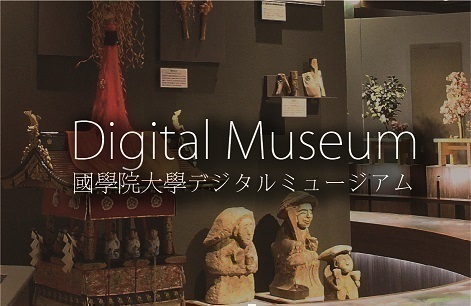- トップ
- Encyclopedia of Shinto
- Daisen Shinkō
Encyclopedia of Shinto
| Main Menu: | |
| Links: |
詳細表示 (Complete Article)
| カテゴリー1: | 6. Belief and Practice |
|---|---|
| カテゴリー2: | Mountain Beliefs and Practices |
| Title | Daisen Shinkō |
| Text | Beliefs and practices associated with Daisen, a mountain located in the western part of Tottori Prefecture, also known as Hōki Fuji. It consists of a number of peaks, including Misen, Tengugamine and Sankomine. The highest is Kengamine (1792 m.). The access route from the north starts from a settlement that has formed around the Tendai temple Daisenji. Beyond this are the inner shrine of Ōgamiyama Shrine, and the shrine dedicated to the attendant kami, Shimoyama Shrine. Many elements connected with the view that the mountain is the Other Realm, where the spirits of the dead go, can be found in, for example, the Muromachi-period Amida Hall and the site known as Sainokawara. In the Izumokoku fudoki (post 713) the mountain is called Ōgamidake, and Yatsukamizuomitsuno no mikoto is said to have used it as a rudder when he brought in more land to extend Izumo Province (kunihiki). In the Engishiki (905-27) it appears as Ōgamiyama Shrine. Ennin's Diary (Nitto guhō junrei kōki, covering 838-47) records that Ennin made prayers here when he was embarking for China, and so its links with Tendai Buddhism were born. It was famous as a shugen (see Shugendō) mountain in the Heian period and is mentioned in such works as the Uji shūi monogatari (ca 1190-1242), Ryōjin hishō (ca 1169), Shin sarugaku-ki (Fujiwara Akihira, 1058-65) and Hokke genki. A shugenja called Kikō is said to have been active here in the Kamakura period. The oldest local legendary history is the Daisenji engi emaki with a colophon dated 1398 (the original was destroyed in a fire in 1928). It relates that a great rock fell from the southeastern side of the Third Palace of the Tushita heaven and split into three - Kumano, Kinpusen, and Daisen. In connection with this, the "mountain" name of Daisenji is Kakubansan (lit. "corner of rock"). The divinities Monju (Manjushri), Kannon (Avalokiteshvara) and Jizō (Kshitigarbha) manifested themselves at the pagoda and are venerated as the Gongen of the Three Places (sansho gongen) (see gongen shinkō). The founding legend says that a hunter from Tamatsukuri in Izumo called Yorimichi entered the mountain from the bay at Miho chasing a golden wolf. When he tried to shoot it Jizō rose out of the earth and the wolf transformed into an old nun called Toran-ni. The wolf was an incarnation of the mountain kami (yama no kami), who, as a nun, persuaded Yorimichi to seek after enlightenment, and gave him the name of Kinren to encourage him in his religious training. Thus Yorimichi is considered to be the founder of Daisen. A special feature of the cult was its veneration of Jizō on the basis of belief in the mountain deity and the view that the mountain was the Other Realm. In the late Heian period a cult arose around the central image of Daisenji, Daisen Chimyō Gongen, identified as an avatar of Jizō. In the Muromachi period Shimoyama Myōjin, the attendant deity (misaki kami), was venerated for its association with Daisen Chimyo Gongen, and was said to enshrine the spirits of a white fox and a shugen practitioner. The belief spread over a wide area, on the basis of oracles (takugen) and reports of miraculous events (reigen) emphasized by yamabushi. Daisenji came under the jurisdiction of Hieizan in the Edo period. Gōen, the head priest of the temple at the beginning of the period, systematized the organization and ritual, and is therefore called the restoring patriarch. A fief of 3000 koku was bestowed on the temple, which supported 42 subtemples. The separation of kami and Buddhist practices and worship (shinbutsu bunri) was carried out in 1875. Daisenji was abolished and the main hall of Daisen Chimyō Gongen was turned into the inner shrine of Ōkamiyama Jinja. In 1903, the temple name of Daisenji was revived and the former Dainichi Hall was converted into the Main Hall, and remains so today. Shugen practices disappeared, but the shrine priests (jinshoku) perform the rite of mohitori, bringing down herbs and water from the summit of the mountain, which preserves elements of the former Misen zenjō, climbing to the summit of Misen, which used to be held on the fourteenth day of the sixth month. In the Bitchū region (in present-day Okayama Prefecture), Daisen is written with the characters 大仙 rather than the usual大山; a branch shrine has been established locally and veneration rites for the dead are performed there. There remains a strong tradition of veneration of the dead also at the base of the mountain, where gongen confraternities (kō) venerate Chimyō Gongen on the 24th of February and October in order to memorialize ancestors. Again, at the foot of the mountain, there is a strong devotion to the mountain as a protector of livestock; horse and cattle fairs used to be held in villages there every year on the twenty-fourth day of the fourth month, the day associated with the deity, which developed in the Genroku era (1688-1704) into the Bakurōza, the biggest such fair in the country. The Daisen Kuyō Taue, a rice-planting festival, best symbolizes the beliefs surrounding Daisen as a water (suijin) and agricultural deity. Here an ox with its horns brightly decorated is led into a rice field and young women plant rice to the beat of accompanying music. This festival is still held at various places and times. — Suzuki Masataka |




